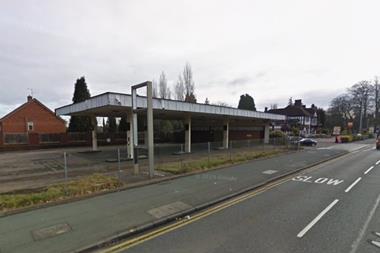Motorway forecourts are always thought to be a different kettle of fish compared with traditional service stations. They have a captive audience after all - there’s no quick way off a motorway if you’re in dire need of fuel, a break or any other kind of emergency, and their reputation for astronomical fuel prices is legendary.
But even motorway forecourts have not been impervious to the pricing strategies of the supermarkets, according to Nabil Subuh, director of retail at Welcome Break. "The biggest challenge we have as a market, is that we still get a small cold from the supermarkets and their pricing strategies," he confirms. "The fact everyone is now filling up at supermarkets means fuel customers are in a slight decline."
But thankfully at Welcome Break the rolling out of a new format on 16 sites in the past two years has led to significant increases in forecourt shop spend. Welcome Break currently trades on 29 forecourts, of which seven are BP branded and the rest Shell. It was following the re-negotiation of its contract with Shell two and a half years ago, that the opportunity to redevelop the forecourt shops came about: "Shell seemed to be very happy maximising the fuel operation, leaving us, as independents, to work as partners with Shell, and come up with the best offer in the shop," explains Nabil. "Before this there had been a franchise fee and the usual arrangement. With the new agreement we split the business a different way, which left us with a commercial opportunity to grow the after sales.
"Between 2004 and 2006, we re-did all our shops with new floors, ceilings and chillers, in 2007 we rebranded our entire estate, and in the main amenity building put in WHSmiths," says Nabil. "Our mission is to be famous for giving people what they want, when they want it, and doing it passionately. And as far as the forecourts are concerned, the goal was to provide a ’grab and go’ offer; greater supervision of the forecourt with faster fuel service; and improved toilet facilities."
The Welcome Break team - including a retail group of six category managers and forecourt managers - got together at regular intervals over a period of three months, using a flipchart on which to pour all their thoughts and ideas about how to create the best forecourt shop format.
"We went through a huge learning curve, says Nabil, "first of all looking at oil company formats such as BP’s Wild Bean Café; understanding why the stores were laid out as they were, and if we could improve on that. We understood, for example, why the tradition is to put everything alongside the window, creating the so-called fast lane, but at some point it was suggested that the tills went in the middle of the shop. We then said ’are we being stupid or can we make that work?’ And the new format evolved over lots of scribble, and it wasn’t until every category manager felt their product was in the right place that we put our new formats to the test."
Three formats were trialled on three different sites over a six-month period: one was a refurbished traditional format; one had a corner format like Wild Bean Café; and one was nicknamed the rugby ball, because of its curved central structure, which led customers on a walk around the store, to three tills which faced the forecourt.
"The ’rugby ball’, with its large ’landing’ area (as people walk in through the door) self-service food and coffee offer, cherry wood shelving and atmospheric lighting, significantly outperformed the other two trials quite substantially," confirms Nabil. "So we cost-managed it to be able to roll it out - for example the curved structure had to be straightened as it would have been too expensive." However, the principal was the same and in its first year of operation the new format - trialled at Fleet Services (south side) on the M3 - helped to boost shop sales by 15-20%. It did the same in the second year, which is extremely heartening for Nabil and his team, as the success of the format they all had a hand in creating, shows their understanding of their customers.
Saul Gisborne, manager of Fleet Services on the north side (which has the new format but with the ’straightened’ curve), says the difference between a traditional and motorway forecourt is that volumes are huge, with transactions averaging 15,000 a week - peak trading during the summer is around 23,000 - with fuel volumes around 350,000 litres.
"It’s important to get people in and out as quickly as possible," he says. "But we also need to consider that while they head for the till via the fast lane, we want them to pick up stuff on the way round. The rugby ball shape does it. It also gives those working at the till a clear view of the forecourt. The other important factor is that we are quite clearly a distress stop and we are evolving to maximise that."
Interestingly the two forecourts on the M3 have a different customer base. The south side is chiefly a holiday route: people have got money and tend to stop for a while and buy products. When they come back on the north side, they’re stressed and have no money left. "The fuel sales are not far behind the south side, but you can see the difference in the shop sales," explains Saul. "But countering that, the north side has the advantage in the morning as it has commuters going to London, so there is a bigger potential to do breakfast trade. Saturday is the quietest day but Sunday evening is one of the busiest when everyone is coming back ready for Monday."
Two years down the line and the format is still evolving, according to Nabil, with plans to develop the food offer with its own Eat In brand.
However, one of the least expected evolutions is the fuel prices - these Shell motorway sites are cheaper than traditional forecourts...



























No comments yet